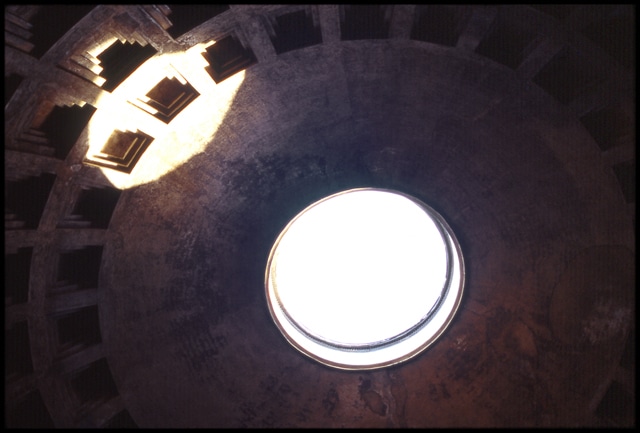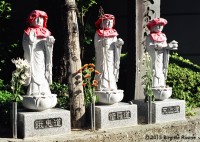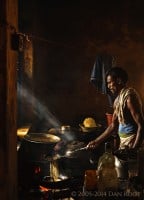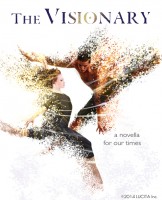In my holiday post, I discussed the power of myth in storytelling. Today, I’m taking you with me to see how it’s done in a published novel.

Roman Pantheon, photo by Birgitte Rasine
I recently spoke with Dr. Kenneth Atchity, the author of The Messiah Matrix. Classical scholar and Yale-educated professor of literature and classics as well as film producer, publisher, book reviewer, and literary agent, Dr. Atchity wears many hats—yet none perhaps as enthralling as that of author.
Birgitte Rasine: What was the initial inspiration for “The Messiah Matrix”?
Ken Atchity: I’d been thinking about the subject matter for a long time—since high school, when my Jesuit teacher drew a parallel between the two JC’s, Jesus Christ and Julius Caesar. Both were said to walk on water, both performed miracles, both gave their lives for their people. So over the years it kept me thinking. Then I met a woman doing research on the topic, and eventually we came to the conclusion I need to write a novel.
BR: What made you decide to write a novel as opposed to a book of non fiction?
KA: The more I researched, the more I realized this story really needs to be told. If I’d written a non fiction book, 56 people would read it during my lifetime. With fiction, thousands of people have read it and hundreds have submitted reader reviews—and hopefully that’s just the beginning.
BR: How long did it take to write, and how many drafts did you go through?
KA: It took a year to write the first draft. I revised, restructured, and reshaped for two years, and polished the writing and checked the research for another year. All told the book took about four years. I wrote at least 40 drafts of this book. The last 20 were either cutting research or figuring out how to dramatize it. My favorite chapter is “Birth of a God,” a spectacle that Augustus stages for the people to make his divinity real to them. I couldn’t imagine this Emperor not staging a show like this.
BR: How much research did you do and how did you go about it?
KA: It took many years of research. During that time, I came across a remarkable book published in 1898, “The Worship of Augustus Caesar,” written by Alexander Del Mar, a former postmaster general who happened to be a numismatist. He’d studied the coins minted during the reign of Augustus and showed how every element of Roman Catholic worship can be traced to Augustus: the title of Pontifex Maximums, the tiara the Pope wears, his titles “Savior,” “Messiah,” “Anointed One,” “Awaited One,” “Prince of Peace,” “King of Kings,” even the golden flail he carried to signify he was a good shepherd of his people.
The more I looked into it, the more I saw this was a remarkable historical explanation for the various symbols of the Catholic faith—that made more sense to me than the unproven stories of a “real Jesus” walking barefoot around Palestine. In fact, I went to the catacombs of Rome to see for myself. The symbols of early Christianity can be traced back to Roman origins. The image of Mary with the serpent at her feet, for example, goes back to Bona Dea, the “good goddess,” the first Roman goddess of abundance and birth. It was Augustus who had the depictions of Bona Dea redone with the likeness of his own mother, Maia. That’s how the iconography related with Mary started.
What Augustus did was both ingenious and profound. He rewrote the history of his time and resculpted myth in his image. He commissioned Virgil to write the Aeneid; he had the Sibylline books edited; he had the scribes from the various nations that formed a part of the Roman Empire rewrite the historical texts, inserting predictions of his coming, predictions of a golden age and a golden child, the lion lying down with the lamb. His coins were struck with the inscription, “God and Son of God.”
Why? It goes back to myth. Augustus knew the way to leave a lasting impression on the world is to create a new myth, or associate with an old one—in his case, that of the redeemer-god who gives his life for his people (following Dionysus, Osiris, and many others). The Romans had confusing and fragmented myths, so he streamlined and unify them. He was a brilliant emperor who copied the cultural icons and concepts of his own time and sought to turn them into a global religion. The Roman Empire never ended; it’s alive today in the Roman Catholic Church, headquartered in Vatican City in the heart of Rome, where even the ATM screens are in Latin.
BR: How did you handle this rather extraordinary proposition in your novel?
KA: I created a character who was skeptical about Catholicism like I was. Ryan McKeown is a young Jesuit who doesn’t understand why there are no provable contemporary references to Jesus Christ. His counter character, archaeologist Emily Scelba, discovers a legendary gold coin that becomes the “smoking gun” to the theory they discover about Christianity’s imperial origins.
BR: What was the most challenging aspect of writing a thriller like this?
KA: Dramatizing the research and trying to make it believable and not totally expository. You’re dealing with a lot of ancient history, and you have to find ways other than expository dialogue to make it come alive. For example, the cave at Cumae, which actually exists, I described it in the context of the narrative, not necessarily exactly the way it is.
BR: What are the key differences between a typical historical fiction novel and a thriller that incorporates mythology?
KA: Some authors write historical thrillers—they only deal with history, not myth. I was dealing with how a myth is constructed. The basic structure of a myth is always the same, but the narrative elements vary. Even Dan Brown doesn’t deal with myth, he deals with artifacts and history.
A myth makes you think on a different level. Being conscious of storytelling is different than telling a story. Myth is about the power of storytelling. That’s the difference.
BR: What aspect of “The Messiah Matrix” has resonated most with your readers, and what aspect were they most critical of?
KA: I think every Catholic who is serious intellectually [about their faith] has had doubts about whether Jesus really lived or not. Writers always write for their ideal reader, not for “everyone.” So when your readers respond to your own doubts, you know you’ve reached them.
As far as criticism is concerned, some readers thought there was too much historical material to digest, but then many thought there should be more.
BR: Share your thoughts about the role myth plays in contemporary literature.
KA: Myth is in our DNA, and it’s at the heart of every piece of literature. What do writers do when they’re at a loss for a story? They consult myth. A writer should always ask, “what’s the myth beneath my story?” If something doesn’t feel right, then the myth has been betrayed or the storyteller wasn’t aware of the myth within the story. Fiction without myth is never going to be satisfying.
BR: What would your advice be to writers tackling myth in fiction for the first time?
KA: Read a book of mythology. Learn what the myths are. Get a dictionary of mythology. For example, “The Greek Myths” by Robert Graves, “Funk & Wagnalls Standard Dictionary of Folklore, Mythology, and Legend,” or “The Masks of God” series by Joseph Campbell.
You can find Dr. Atchity's novel “The Messiah Matrix” on Amazon, or head over to his web site to learn more about the book.
PRACTICE
What are the myths embedded in your work? Take one (or several) of your works, whether published or not, and identify the myth beneath the story. Share that myth here and tell us why it’s critical to your story. If you're having trouble identifying the myth in your story, let the community help!







Wonderful subject. Gets beneath the “interior decorating” of a story. When I was starting out as a writer, I would always find myself unwittingly creating an archetypal character. Hermes was one of my favourites, and Artemis another. I was always thrilled to find that I was “on track,” that the ancient myths were in my blood. I must read Atchity’s “Matrix” book. Many thanks.
Glad you enjoyed it PJ. It does sound like you’ve got myth in your blood. Follow that gene!
Fascinating article.
Religion is very much open to interpretation, isn’t it? I’ve noticed that there are as many representations of faith as there are followers. Furthermore, the Bible is filled with great examples of storytelling. The world Bible means library, and that’s exactly what it is: one of the oldest reference libraries in the world.
Thanks for this post, Birgitte. I will be adding the “Matrix” to my reading list, and assessing the role that myths play in my own stories.
Indeed it is. It is, or at least IMHO, should be, a personal matter first and foremost. Thank you for reminding us what the very word “Bible” means. In fact, in Spanish and Italian “library” is “biblioteca”, in Polish it’s “biblioteka,” in French you have “bibliothèque”….
This is an amazing topic and I plan to dip into it much further by studying mythology. It can only enrich storytelling. Thanks, Brigitte, for encouraging us to grow and taking the time to share this interview.
You are most welcome Ruth. 😉
Hi there everybody, thanks for a great post Birgitte! I always liked how myths can expand the scope of who your story is relevant to by incorporating people from other times. I have a little project (vaguely) under way set in an isolated town in some wretched, cold part of the world. The story (vaguely) features nature and weather getting more violent and ferocious as supernatural forces use them as their tools. If anyone has any good myth references featuring animism, snow, ice or wind please do post – I have always been besotted by the myths from where I live but they unfortunately feature our lovely weather quite prominently 🙂
Hi Carmen, your book sounds awesome. Nature of course figures in countless myths, often intertwined with human ‘nature’. Think Poseidon, Demeter, of course Gaia, there’s a whole list: http://en.wikipedia.org/wiki/List_of_nature_deities
The Maya even have a day sign embodying Wind, that’s the day sign Iq. I actually write about it in my book “The Serpent and the Jaguar”.
Where do you live — not Tornado Alley??
Oooh that Mayan sign sounds intriguing I shall look into it. Haha no, I am from New Zealand and it is pretty warm and temperate all year around in my part 🙂
I’m sorry, is it too late to post a comment if it’s been a few days? I was on vacation at my grandmother’s. 🙁 I apologize for any inconvenience!
My story is about a man who loses all his memories and unwittingly goes to a big city to retrieve them. It’s all a bit vague and the story itself is narrated by a very unreliable narrator, so you don’t know if the things happening are real or merely dream fragments.
In one of my character’s memories, his mother appears as a very ambitious woman, one who would do anything (even sleep with her professor) if it would get her what she wanted. In the end, her extreme drive leads to her death and the alienation of her son, the narrator. I thought the myth in here was the one of Icarus, who flew too close to the sun and melted all the wax in his mechanical wings to fall into the sea and drown.
Thank you for such a wonderful post and interview!
Not too late at all Eugine! Your story sounds fascinating. Have you read *The Icarus Deception *by Seth Godin? It’s nonfiction, but if you’re at all interested in the myth of Icarus, it’s a fascinating take.
Joe Bunting
joebunting.com